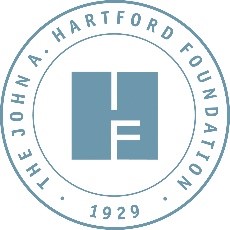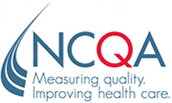When the Person in Person-Centered Care Is Your Mother
May 25, 2016 · Jessica Briefer French
For more than five years, NCQA has been partnering with the SCAN Foundation and the John A. Hartford Foundation to research quality measurement to improve health outcomes for people with complex needs, including the elderly. This research highlights the importance of coordination of medical and long-term care services that puts the individual’s goals at the center. NCQA is proud and honored to feature a blog post written by Wally Patawaran’s, Program Officer at the John A. Hartford Foundation, experience as a caregiver for his mother. This post was originally published on The John A. Hartford Foundation’s Health AGEnda blog.
“My mother understands everything we’re saying.”
My brother was addressing the latest home health aide, giving her an orientation. She nodded on cue, but it seemed clear that she was giving this latest assignment a look-over before signing on. She could have been forgiven for wondering about the truth of the statement.
After all, my mother doesn’t always follow a conversation with her eyes anymore. She doesn’t know she’s blind in much of her visual field. Nor can she find the right words to convey her thoughts, feelings, and emotions. She wants and tries desperately to communicate, but it is the people around her who must read the emotions on her face and the movement of her limbs to understand what she means.
She has always enjoyed conversation, but the best we can offer now is to encourage her aide to read to her—on this occasion, a chapter from the book, Proof of Heaven, a story about a neurosurgeon’s near death experience. My mother turns her head toward the aide, listening intently to every word. She started the book shortly before her last stroke, a hemorrhage that led to a nearly two-month stay in acute rehabilitation and, now, enrollment in home hospice.
After more than eight hemorrhages—we stopped counting at that point—my mother, Emma, has accumulated a list of impairments that she, her family caregivers, and her team of home health aides have adapted to over the past two-and-a-half years. Each stroke brought a new impairment, and a new adjustment to life, some of which were difficult to negotiate, since she’d always been so fiercely independent.
As with other people with complex needs—such as older adults with multiple chronic conditions and functional limitations, persons with physical, intellectual, or developmental disabilities, persons with severe and persistent mental illness—my mother now requires a combination of medical care and long-term services and supports (LTSS).
I am proud and honored to have worked on two grants to the National Committee for Quality Assurance (NCQA) for a stream of work that has the potential to shape the coordination of medical and long-term care within a team approach that puts the person’s goals and values at the center. Although there is broad agreement that person-centered, goal-based, integrated care has the potential to improve health outcomes and reduce the cost of care for people with complex needs, there are a wide variety of approaches to care and a lack of consensus on what it means specifically.
At a national level, the movement from provider-centered instruction to person-centered participation is being driven largely by the recognition that person-centered care can help individuals achieve their desired outcomes, and by state and federal requirements. Health care and community-based organizations and care managers are increasingly incorporating person-centered care planning principles in their work, a trend I’ve witnessed personally as one of my mother’s caregivers.
Like Earthquakes Without Warning
My mother’s situation underscores how important the application, coordination, and continuity of expert geriatric care is both inside the hospital and in the community. She has an untreatable neuro-degenerative disease known as cerebral amyloid angiopathy. It’s a disease that causes the blood vessels in her brain to thicken and crack. She’d been dealing with this disease for several years, and had been admitted to hospital multiple times for “transient ischemic attacks,” typically with a temporary loss of vision. But none of her doctors at the time diagnosed it.
It was only after her first significant hemorrhage that we learned about the tens of thousands of much smaller bleeds in her brain, each one of them a ticking time bomb. For those who suffer from the disease, strokes arrive like earthquakes without warning.
For the first year and a half, the earthquakes and aftershocks followed a pattern. She’d be rushed to the emergency room, then admitted to the Intensive Care Unit with a hemorrhage. Her children would converge around her, some from distant parts of the globe. We would work as a team and engage the doctors, nurses, and social workers at each hospital, to nip errors in the bud and to prevent or correct mistakes that threatened her health or safety. We’d breathe a sigh of relief when her insurance company would approve the transfer to acute rehabilitation, although the transitions were rarely seamless.
A model patient, she would work with her physical, occupational, and speech therapists to set goals, undertake any assignment, and gradually work her way to repatriation at home. She’d emerge positive and hopeful, albeit conscious of her diminished capacities, and aware that she might return with yet another bleed. Once at home, she’d breathe a sigh of relief. By the next day, she’d meet with the care manager from her long-term care provider to discuss changes in her plan of care. She was fortunate to have that extra layer of support.
Person-Centered Care: Understanding, Communication, and Coordination
The application of person-centered practices to complex medical and social environments is difficult. Care managers responsible for helping individuals with medical and LTSS needs must understand what is most important to the individual. There must also be an effective system for coordinating care across the care continuum to support those preferences.
Providers and care managers need to arrive at a common understanding of a patient’s goals and then communicate and coordinate effectively. Getting this right directly impacts the individual’s outcome and experience. As much as it seems like common sense, successful application of these principles is anything but commonplace, especially in highly fragmented systems of care.
With support from The John A. Hartford Foundation and The SCAN Foundation, NCQA conducted a case study of nine sites that provide combinations of medical care, behavioral health care, and LTSS. Researchers observed assessment and care-planning meetings; interviewed individuals, care managers and organizational leaders; and reviewed documented care plans.
Study findings are reflected in two reports that not only describe current practices in goal-based, person-centered, integrated care, but also blaze a path forward. You can view or download PDFs of both reports: Policy Approaches to Advancing Person-Centered Outcome Measurement, which was previously released, and Goals to Care: How to Keep the Person in Person-Centered Care. “Goals,” the most recent of the two, is a spotlight report targeted at health plans, care coordination organizations, and care managers, and combines vignettes and case studies to illustrate practical steps for eliciting and negotiating goals, supporting and monitoring goal attainment, and engaging effectively with a team to achieve success.
The John A. Hartford Foundation and The SCAN Foundation funded a subsequent project, “Improving Outcomes for Vulnerable Populations” that builds on the case study findings to set accreditation standards for managing LTSS and to explore approaches to person-centered goal setting and care planning.
Having traveled a long path with our mother—which continues as I write this—my siblings and I never referred to our own attention to our mother’s care as “person-centered,” though it certainly has been. Our knowledge of her priorities and our common sense have led us forward in a constant state of engagement with her providers and caregiving team at every stage.
I know from my work that the needs of complex patients are many and not all families have the ability and determination to respond as we have as advocates and care coordinators. That is why NCQA’s work and its dissemination are so important.
After my mother’s last stay in the hospital, her social worker sat down with us and opened our meeting by asking about our mother’s goals. I knew then that a process the Foundation and its partners have worked on for years is making inroads in the field, and making a difference in the lives of older adults.
Supported by grants from The SCAN Foundation and The John A. Hartford Foundation:
The SCAN Foundation—advancing a coordinated and easily navigated system of high-quality services for older adults that preserve dignity and independence. For more information, visit www.TheSCANFoundation.org.
The John A. Hartford Foundation, based in New York City, is a private, nonpartisan philanthropy dedicated to improving the care of older adults. For more information, please visit www.jhartfound.org.











